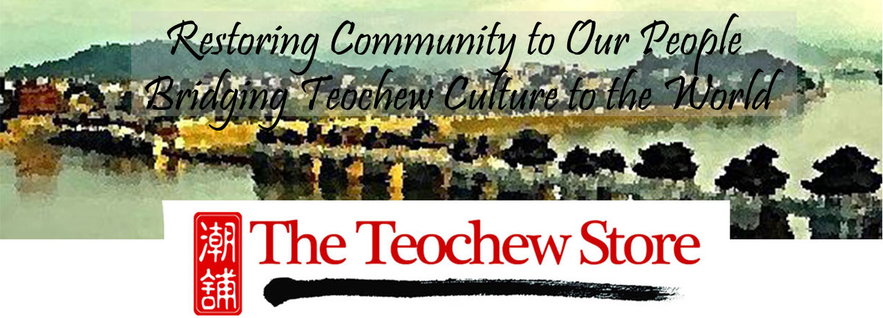A special series of articles about ordinary people living in Swatow, written by students from Shantou University (STU) Cheung Kong School of Journalism
by Liu Xia (刘霞)
Fairy figurines, marinated geese, frolic goldfish were placed on a table in Huang Jinqi’s workshop. They were all made of rice. Huang, the only rice statue craftsman in Shantou, gave life to the statues and carried on a unique folk craft in China.
The history of making rice statue dated back to more than a thousand years ago, the Song Dynasty, originated in Wenzhou, Zhejiang province. Huang’s grandfather learned the craft by himself a century ago and turned it into a prosperous business.

Huang made out of the rice the Eight Immortals, fairy figures in Chinese folk stories
“My skill is passed on by ancestors. We didn’t learn it from others,” Huang Jinqi said with smile and pride.
Rice statue is made of cooked rice. After rubbing, pinching, nipping and carving, the craftsman turns rice flour into various shapes, and then colors them. When Huang Jinqi’s grandfather first started to make rice statues, he found that they could easily have cracks and break. But after repeated experiments, he eventually solved these problems and established his own rice statue brand.
Huang Jinqi started to learn to make rice statues from his grandfather when he was a child.
“I learned it just because I thought they were amazing and looking good,” Huang Jinqi said with his fingers keeping kneading rice flour to make peaches, which were ordered by clients to worship their ancestors.

Huang Jinqi painting the rice goldfish to make them shiny
Huang still remembered that his grandfather required him to observe and try to figure out the shapes and expression of birds, fishes and other animals, so that he could make the rice statues vivid.
During the 1960s when the Cultural Revolution broke out, the family was forbidden to make rice statues, which were regarded as old stuff in the feudal society. But the Revolution couldn’t stop people in Chaoshan [Teochew] area to worship their ancestors. People would still prepare food, incense, paper money, and sometimes rice statues to worship heaven and their ancestors on big festivals.
During that time, Huang Jinqi’s family tried to make rice statues furtively. But officials found out about it and destroyed all their rice statues.
Not until the reform and opening policy came in the 1980s, could they finally open a shop to continue making and selling rice statues.
Now, as the only one and most well-known rice statue maker in Shantou, Huang Jinqi’s skill are attracting clients from near and far.
Huang’s two sons are both in their 30’s and have also learned to make rice statues.
“They don’t show much interest in making these. They help us only when we are busy,” Huang said.
Huang hoped that one of his sons and grandsons could carry on this family tradition.
“When I don’t have energy to do these, they will no doubt take over my job,” Huang Jinqi said confidently. “I don’t want this family tradition disappear gradually.”

A rice pig head made by Huang for a Shenzhen client
Article reproduced by kind permission of Shantou University (STU) Cheung Kong School of Journalism.
"Like" our Facebook page to stay updated with The Teochew Store.
